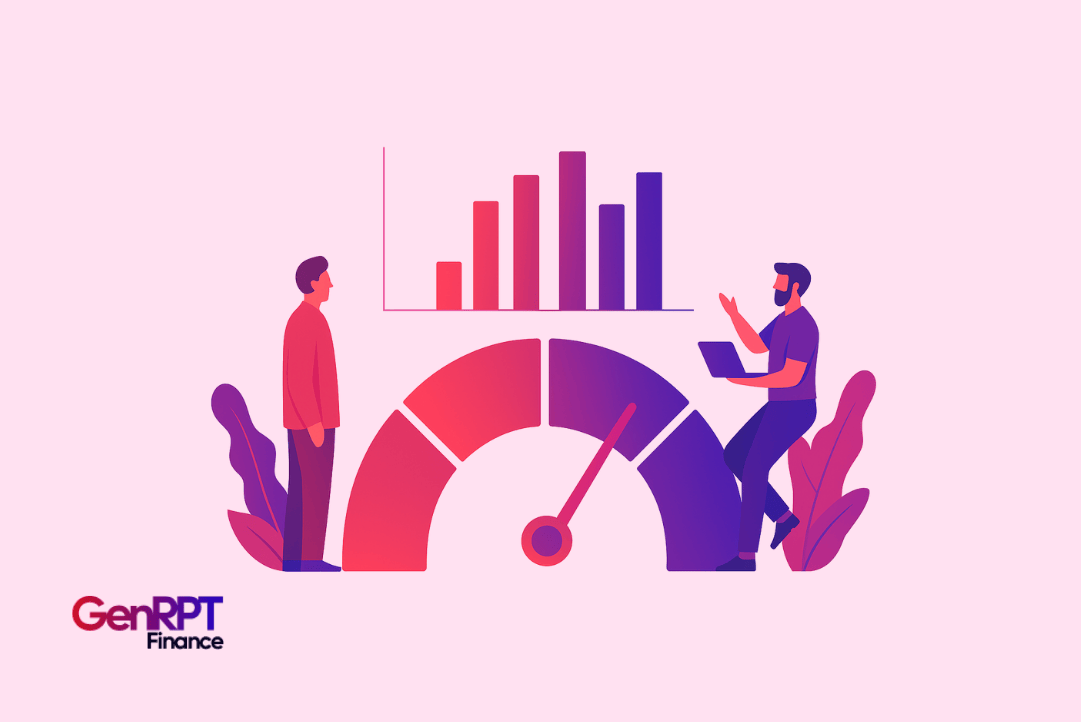
What Is Portfolio Risk Assessment and Why It Matters
October 23, 2025 | By GenRPT Finance
In equity research, success isn’t just about identifying the right opportunities — it’s about understanding the risk exposure that comes with them. That’s where portfolio risk assessment becomes crucial. It helps investors, asset managers, and financial advisors evaluate how well their portfolios align with both risk tolerance and long-term goals.
At GenRPT Finance, we view portfolio risk assessment as a structured process that bridges data analytics and decision-making. By combining automation, intelligent modeling, and analyst expertise, teams can gain clearer insights into market exposure and avoid costly surprises.
Understanding Portfolio Risk Assessment
Portfolio risk assessment involves identifying, measuring, and managing potential threats within a portfolio. It takes into account market volatility, sector dependencies, and asset performance to build a realistic risk profile.
For investment analysts and financial data analysts, this evaluation ensures that recommendations match an investor’s objectives and comfort with uncertainty.
In an equity research report, this section often sits beside forecasts and valuations — turning insights into actionable strategies.
Why It Matters in Equity Research
In the age of equity research automation, platforms like GenRPT Finance accelerate data gathering and scenario modeling. Yet, automation alone isn’t enough, analyst interpretation remains key.
Risk assessment informs both tactical and strategic choices. For example, detecting rising volatility in a region or sector can trigger early exposure adjustments. This foresight not only prevents drawdowns but also enhances client trust and confidence in research quality.
Core Components of Portfolio Risk Assessment
1. Identifying Risk Types
Every portfolio faces unique threats — from economic shifts and geopolitical events to company-specific challenges. Analysts categorize and prioritize these risks based on potential impact.
2. Quantifying Risks
Using models, correlations, and stress tests, analysts measure risk magnitude. GenRPT Finance automates these computations, helping teams visualize and compare exposure across sectors.
3. Diversification Review
Diversification remains the foundation of risk mitigation. By analyzing distribution across assets, regions, and industries, portfolio managers ensure resilience against market shocks.
4. Scenario Analysis
What happens if markets dip 10%? Or interest rates rise? Scenario testing in GenRPT Finance helps visualize these outcomes instantly — transforming static analysis into proactive planning.
The Role of Documentation and Automation
Accurate documentation underpins every strong risk framework. Analyst reports, financial reports, and dashboards must be clear enough for decision-makers to act quickly.
With GenRPT Finance, risk insights are automatically compiled into structured reports; complete with exposure summaries, volatility projections, and confidence indicators. This enables wealth managers and financial consultants to focus on interpretation rather than manual data preparation.
How Professionals Use Portfolio Risk Assessment
1. Financial Advisors match portfolios to each client’s tolerance and objectives.
2. Asset Managers fine-tune allocations to balance growth and protection.
3. Wealth Managers preserve client value through cyclical markets.
4. Portfolio Managers use risk metrics to guide buy/hold/sell decisions.
5. Financial Consultants interpret reports to inform large-scale investment strategies.
Across roles, the goal remains the same; to make confident, data-backed decisions that protect and grow wealth.
Best Practices for Stronger Risk Assessment
1. Review Regularly – Markets change fast; risk profiles must evolve with them.
2. Integrate Equity Research – Use fresh research findings to uncover hidden risks early.
3. Automate with Insight – Let automation handle the heavy lifting while analysts focus on context.
4. Communicate Clearly – Translate complex metrics into simple, client-friendly explanations.
Conclusion
Portfolio risk assessment is the backbone of sound investing. It goes beyond protecting against loss — it enables smarter, more adaptive strategy design.
With GenRPT Finance, financial professionals gain the clarity and automation needed to analyze exposure, balance risk, and communicate insights effectively.
In a market driven by change, understanding risk is not optional — it’s the key to lasting success.
